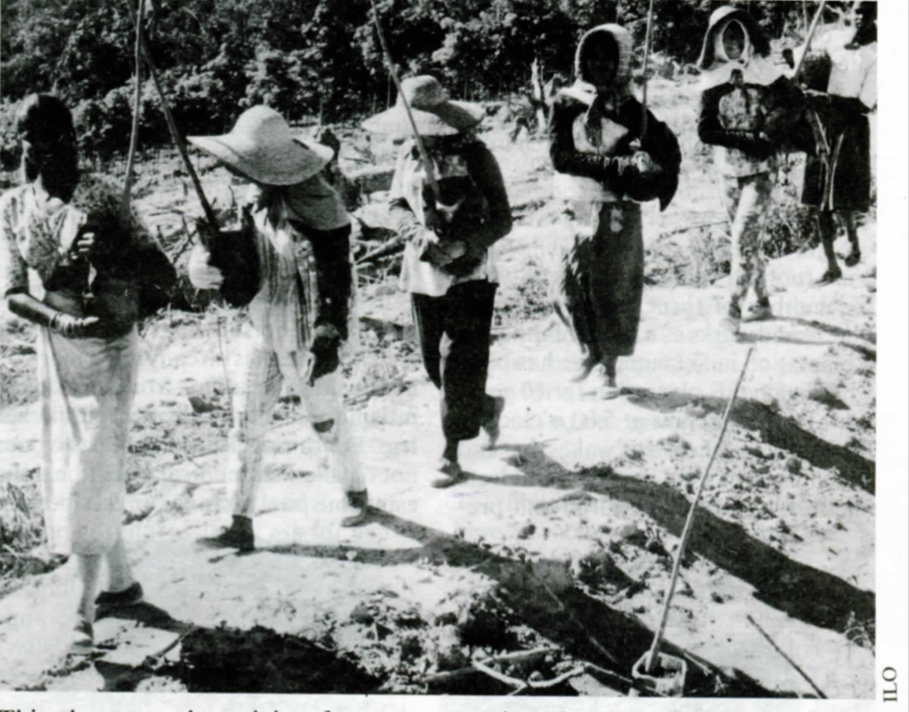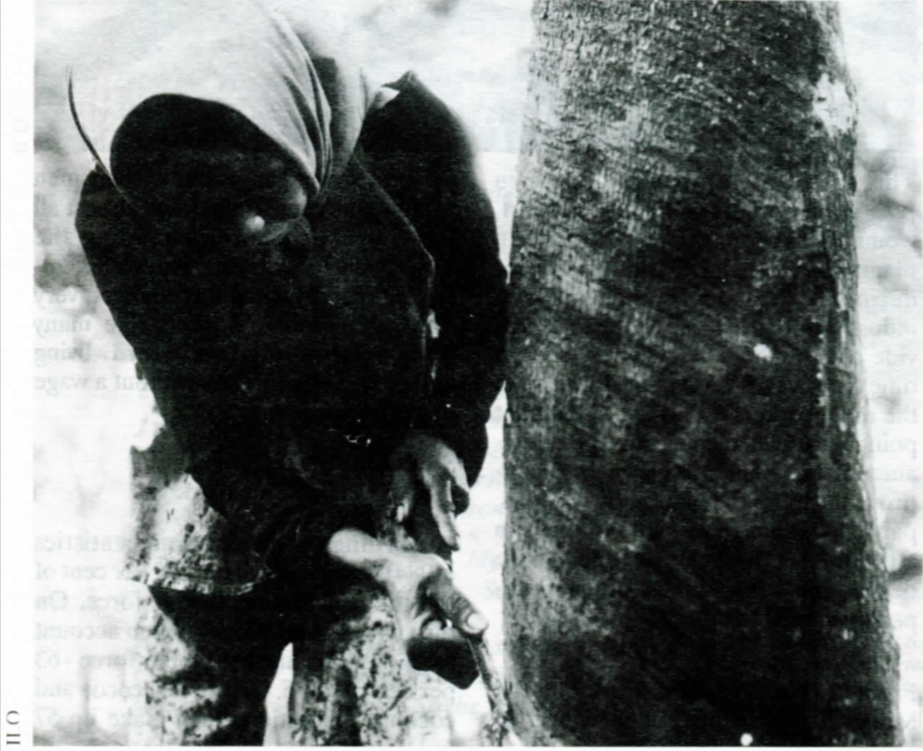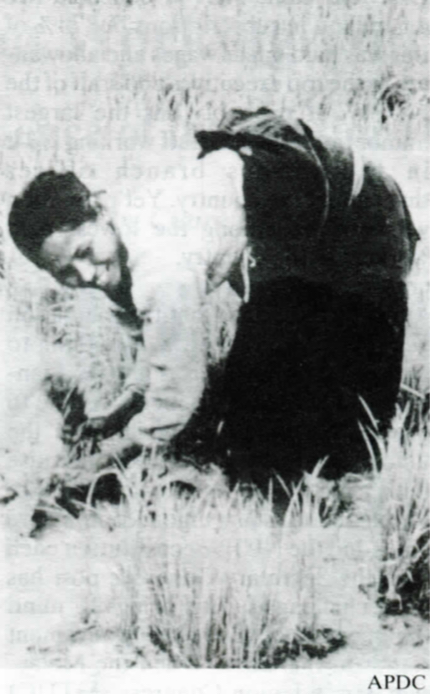Malaysian Women Plantation Workers
The recent focus on plantation workers and the National Union of Plantation Workers in the local has raised many issues about plantation workers. We in Suara Wanitra would like to contribute debate by looking The Origins of Malaysian Women Workers in the Plantations.
The Origins of Malaysian
Women Workers in the Plantation
The history of plantation workers in Malaysia is the study of British colonialism not only in Malaya but also in India. The British colonial government in Malaya embarked on a policy to encourage the cultivation of rubber on a commercial scale at the turn of the 20th century. The rubber for the plantations was initially smuggled out of Brazil while the labour for the industry was indentured from India. In the beginning, that is from around the 1890s to the 1930s, the labour from India was mainly male labour. The men worked here during their productive years and those who survived were sent back to India. Female labour was not actively recruited because it was considered less productive and more expensive to maintain in terms of accommodation, maternity and nursery provisions. Moreover in the early years there was a great deal of heavy work involved in the clearing of the Malayan jungles and the planting of the trees. Today we only see the neat rows of trees in the plantations so we forget that at one time this was all virgin jungle. These workers toiled under barbaric conditions and were in no position to seek to improve their working and living conditions because the British had a large reserve labour force in India.
However, in the late 1930s the Indian government sought to stop this gross exploitation by turning off the migration tap. Thus the planters in Malaya had to contend with a more permanent and limited workforce. One of the ways by which they achieved this was by increasing the recruitment of female labour from India.

This then was the origin of women plantation workers in Malaya - in short, women were brought to the Malayan plantations with the intention of reproducing cheap labour for the plantation industry and at the same time to provide cheap labour themselves (at that time their wages were much lower than the men workers). This is a significant point because it accounts for the reluctance of the plantation owners to improve the lot of the plantation workers, particularly that of women workers - an attitude that has changed very little despite the fact that most of the European owners have gone.
From the dawn of their history on the Malayan plantations, women had to work at lower wage levels than men while at the same time doing almost all the domestic chores including the heavy work of carrying water and collecting fuel. This too has changed very little and women workers like many women elsewhere go out to earn a living and come back to work without a wage in the homes.
Situations of
Women Plantation Workers
According to government statistics (1984) women make up 52.5 per cent of the total plantation labour force. On the rubber plantations women account for more than half the labour force - 63 per cent in 1985. On the tea, cocoa and coconut plantations they make up 57per cent, 58 per cent and 53 per cent respectively of the total work force. Even on oil palm plantations they account for 4 per cent of the work force.
What are the types of work that they do on the plantations? Generally they are employed in the lowest paid jobs: weeding, spraying herbicides and applying fertilizers. They also tap rubber trees, pluck the tea leaves, harvest the cocoa fruits, harvest the oil palm bunches from the shorter trees and carry the oil palm bunches to the collection sites.
The following are some stories of women plantation workers which focus on some of their problems.
Valli's Story
Valli (not her real name) is a 28-yearold mother of three. She is a single parent and works as a rubber tapper on a plantation in Selangor. She has been working on this plantation for 10 years now. Her day begins at 5:00 o'clock in the morning when she wakes up and prepares breakfast for her children. She then wakes the children and prepares the older two for school. After the two children leave for school, she takes the youngest to the estate nursery. Then she presents herself at the muster at 6:00 o'clock and starts working. Her work involves tapping 500 trees which are relatively old. For this she uses a ladder. This means that Valli carries a ladder around from tree to tree, climbing up to tap and climbing up again to collect the latex. After she takes the latex by bicycle to the weighing station she collects her child from the nursery and comes back home around 2:00 p.m. She gives her children, who are back from school by this time lunch and takes a short nap. By 3:00 p.m. she leaves for her second job as an oil palm fruit carrier. During this time her children are left alone at home. Her second job is on a contract basis and she is forced to take it because she has to support the three children by herself. Carrying the heavy fruit bunches has already left a mark on her health. She suffers from very severe inflamation of the varicous veins in her legs. For this painful condition she does not have much medical attention - the estate hospital assistant, prescribes panadols and asks her not to walk too much or to carry heavy loads - advice which is impossible to follow in her circumstance.

She has not brought this issue up with the trade union because she does not think that her health is a union issue. Unlike most women in the plantations Valli was an active and vocal trade unionist having served as secretary for the local committee of the trade union in her estate for a number of years. She had to give up her trade union work when her husband abandoned the family and she had to shoulder her family responsibilities alone.
She returns home in the late evening and attends to the cooking, washing and tending to the children. This is her life and her only ray of hope is in the expectation that her children would complete their schooling and get jobs that will take them out of the working class - particularly out of the plantation.
Meena the oil palm harvester
Meena, 27 years old, is among 25 women oil palm harvesters on a big oil palm estate in Perak. Her day begins early like all plantation workers. She doesn't have to go to the muster unless her partner (oil palm harvesters work in pairs - one harvesting and the other carrying the fruit) is unable to work. She cycles to the field alloted to her and harvests a few hundred oil palm bunches a day. Though women harvest only the shorter trees, harvesting is strenous work. She has been doing this job for more than five years already. Meena agreed to work as a harvester because it pays more. As a result of the harvesting and pruning Meena has injured one eye which was pricked by a thorn from the oil palm tree. She complains also of chest pains which is dismissed by the hospital assistant. She says she will have to go on working because her husband is unable to do hard work after he hurt his leg in an accident. She too expects her two children to take them out of the working class.
Meena was also a vocal and active trade unionist but she was suspended from the union (by the union) because she was held responsible together with six others in the local committee of the trade union for organising a strike. Meena has mixed feelings about working as a oil palm harvester. Many women workers feel that this job is too strenuous for women and that women should refuse to accept this task. On the other hand an oil plam harvester earns more than a tapper or a weeder.
Meena returns the hoe at about 2:00 p.m. and attends to the household chores of cooking, washing and cleaning. She says it is easier for her now because her children are already in their teens.
When asked about compensation for the injury to her eye she said that all she got was two days' paid medical leave. In addition she has not had a medical check by a trained doctor for the chest pains that she gets. The estate hospital assistant only provides panadol and asks her to get back to work.
Parvathy, the weeder
Parvathy, a 23-year-old woman herbicide sprayer on an estate in Selangor died on June 14, 1985. Parvathy was working as a sprayer for three years when she died. Parvathy was carrying a jerry-can of the highly toxic paraquat for her colleague when the liquid spilled on her back and legs at about 11:00 a.m. The estate conductor and the mandore (the supervisory staff) told her to wash herself in the nearby stream and carry on working until 2:30 p.m. She went home and then went to the estate cHnic at 3:00 p.m. and the hospital assistant gave her some pills and told her to rest. All this is gross negligence because there is no known antidote for paraquat poisoning. Thus what pills was she given? Moreover paraquat must be prevented from being ingested by the body. Thus Parvathy should have washed herself immediately after the paraquat spilled on her and she should have been given a change of clothes. Time is an essentialfactor in the battle against paraquat poisoning. She started vomiting and complained of burning sensations on her back and legs. She was taken once again to the estate clinic and only then did the hospital assistant ask for her to be sent to the Group Hospital. Unfortunately Group Hospitals are not well equiped and they do not have a doctor available all the time. After some time there she was finally sent to the government district hospital. She was semiconscious for five days before she died. Parvathy had spilled paraquat accidently on herself three times before and though she was asked by the doctor not to work with paraquat she was not allowed by the management to do so. Again she did not think of raising this issue with the union.

There are thousands of other plantation workers who work with paraquat and other toxic chemicals without protective clothing and without adequate information about protection for themselves. It is common for these workers to lose their nails, develop nose- bleeds and rashes and gradually lose their eyesight. Yet the situation remains unchanged.
Life on XY Estate
This is a cocoa and coconut plantation that is located about seven miles from the main road. The workers' houses are located in one area which has a big drain running around it. On one end of the drain there are about ten toilets which do not have any septic tanks. Thus the sewage goes into the drain which carries it all around the worker's quarters. The drain has to be cleaned manually and this is done usually before visits by the labour or health department officers.
All the houses are pre-war houses which should have been demolished according to the law - Workers (Minimum Standards of Housing) Act, 1966. Water for the workers is provided by a well which is located right in the middle of (he housing area and therefore not more than a few hundred yards from the sewage drain. The water from the well is used by an electrically-powered pump for a few hours a day. The water then has to be carried manually to the house -a chore done by the women.
The children in the estate appear to have permanent running noses and a variety of skin diseases. To go to secondary school the children have to cycle or walk the seven miles to the main road and it is no wonder that very few make it to secondary school. There is a Tamil primary school a few yards away from the toilets. This school appears to be the most cheerful place in this community mainly because the workers and the youth in the estate have put in a great deal of effort and money to build up the school which has now become their symbol of a better life in the future.
Most young men leave this estate in search of better jobs. This leaves the less socially mobile groups of women and the older men behind. Women on this estate face a strong sense of isolation. They rarely get out of the estate because one needs to walk the seven miles to the main road or one has to have a motor-cycle which the women do not possess because they are not expected to ride motor-cycles. The isolation of the estate has made it convenient for unionists and politicians to ignore it. Thus the estate has seen very few positive changes.
Women Plantation Workers and the
Trade Union
Women workers account for half the work force in the plantation and perhaps also in the union. However, their presence in the leadership of the National Union of Plantation Workers (NUPW) is negligable. Here again women are blamed for this - they do not know anything about the trade union, etc. This is only one side of the story.
A glimpse of the other side of the story can be obtained from the story of Vanathama, a 40-year-old woman who is contesting the chairmanship of the Selango Branch of NUPW. This is the first time in 43 years that a woman worker is making a bid for a post in NUPW. She has said in her campaign that she was contesting because she wanted to give women a bigger voice in NUPW. Furthermore, the NUPW has generally failed to improve the workers' living and working conditions and most NUPW officers are not estate workers but supervisors and mandores, she says.
What is the NUPW like? It is the largest and richest trade union in the country. Its members pay the highest subscription in the country - M$ 5.00 a month Last year alone NUPW collected M$ 4.5 million in subscriptions but 70% of this was paid out as wages and allowances to the top executives and staff of the NUPW. It probably, has the largest number of full- time staff working for it in the various branch offices throughout the country. Yet plantation workers are among the lowest paid workers in the country.
Many people think that the plantation workers have done little or nothing to improve their lot. This is untrue. Plantation workers have been trying to change the union leadership but the union leaders have survived because their constitution makes it difficult to topple them. In fact union leaders have amended the NUPW constitution each time the Secretary- General's post has been challenged. This brings to mind the question of where the government stands in this issue. When the Malaysian Trade Union Congress (MTUC) seemed to be aligned with opposition political parties another Labour Federation is about to be registered without much anticipation of opposition from the Director- General of Labour. But all the attempts to register another trade union for plantation workers have not received the same kind of support. All the protests by the workers in the recent NUPW elections that were directed to the Director- General of Labour were directed back to the members who were asked to take it to the NUPW. How are the plantation workers who are spread throughout the country going to organise themselves to effect a change in the NUPW - will the plantation owners and the government allow such organisation to develop?
The plantation workers appear to understand all the odds against them. Perhaps now that the NUPW has been publicly discussed the plantation workers like Vanathama will receive enough support in her struggle to improve the lot of plantation workers.
Conclusion
In future issues of Suara Wanita we hope to focus on other issues that affect women in the plantation. We hope too to be able to share with our readers some instances of the struggles of plantation workers to improve their lives. We feel a need for this because plantation workers have been grossly misunderstood and there are too many myths about them. These myths are dangerous because they undermine the efforts that are made to improve plantation workers' lives and ultimately we fear such myths will undermine the confidence that the plantation workers have in themselves.
Source: Suara Wanita 1989 No. 2 Published by Persatuan Sahabat

Wanita Selangor 47C, Jalan SS6/12, 47301 Petaling Jaya, Malaysia

